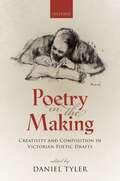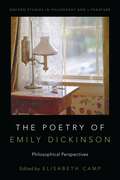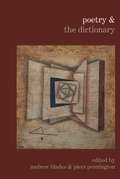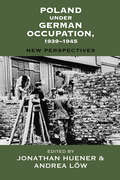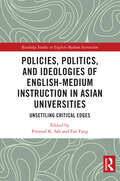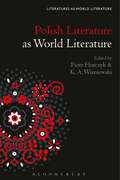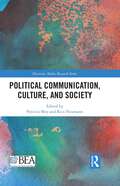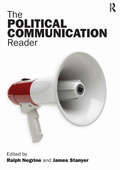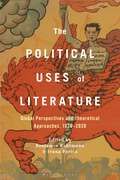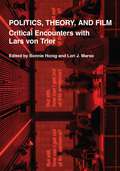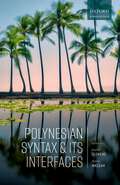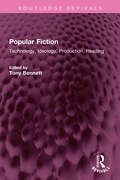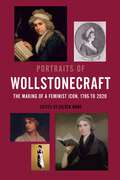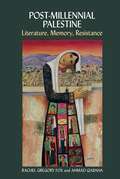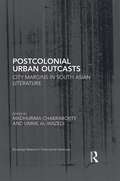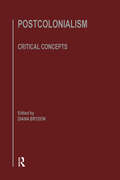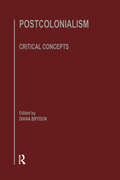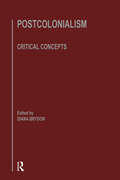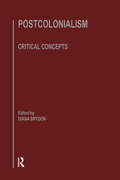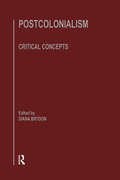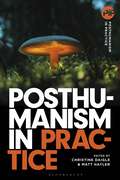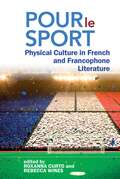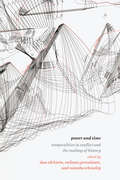- Table View
- List View
Poetry in the Making: Creativity and Composition in Victorian Poetic Drafts
Poetry in the Making investigates the compositional practices of Victorian poets, as made evident in the autograph manuscripts of their poems. Written in an accessible and stimulating style, the book offers careful readings of individual drafts, paying attention to the revisions, cancellations, interlineations, trials of rhyme and form, and sometimes the large structural changes that these documents reveal. The book shows how manuscript revisions offer insights into the creative priorities and decisions of major Victorian poets (Wordsworth, Tennyson, the Brownings, Clough, Hopkins, Christina Rossetti, Swinburne, and Yeats); and they investigate ideas of composition in the period, particularly the uneasy balance between inspiration and labour. The book testifies to the care that poets exercised at the smallest levels of their craft and demonstrates that the drafts reward an equally close attention on the part of the critic. Collectively, the chapters develop a survey of how Victorian poets experienced and understood their own creativity, setting abstract claims about inspiration and craftsmanship against their own practical experiences. The book responds to and extends a renewed interest in manuscript sources at the present time that has been stimulated in part by the increased availability of digital and facsimile editions. For a long time, scholarly interest in nineteenth-century literary manuscripts has been dominated by editorial and theoretical concerns. This book testifies to the value for criticism of poetic drafts, establishing the significance of revision and of manuscript studies for the field of Victorian poetry and for literary scholarship more generally.
The Poetry of Emily Dickinson: Philosophical Perspectives (Oxford Studies in Philosophy and Literature)
One of America's most celebrated poets, Emily Dickinson was virtually unpublished in her lifetime. When a slim volume of her poems emerged on the American scene in 1890, her work created shockwaves that have not subsided yet. Famously precise and sparse, Emily Dickinson's poetry is often described as philosophical, both because her poetry grapples with philosophical topics like death, spirituality, and the darkening operations of the mind, and because she approaches those topics in a characteristically philosophical manner: analyzing and extrapolating from close observation, exploring alternatives, and connecting thoughts into cumulative demonstrations. But unlike Lucretius or Pope, she cannot be accused of producing versified treatises. Many of her poems are unsettling in their lack of conclusion; their disparate insights often stand in conflict; and her logic turns crucially on imagery, juxtaposition, assonance, slant rhyme, and punctuation. The six chapters of this volume collectively argue that Dickinson is an epistemically ambitious poet, who explores fundamental questions by advancing arguments that are designed to convince. Dickinson exemplifies abstract ideas in tangible form and habituates readers into productive trains of thought--she doesn't just make philosophical claims, but demonstrates how poetry can make a distinct contribution to philosophy. All essays in this volume, drawn from both philosophers and literary theorists, serve as a counterpoint to recent critical work, which has emphasized Dickinson's anguished uncertainty, her nonconventional style, and the unsettled status of her manuscripts. On the view that emerges here, knowing is like cleaning, mending, and lacemakingL a form of hard, ongoing work, but one for which poetry is a powerful, perhaps indispensable, tool.
Poetry & the Dictionary (Poetry &... #8)
Poetry is an ancient verbal art, which has its roots in the oral epics and fragments that survive from classical times. Dictionaries of English, by contrast, are a comparatively recent phenomenon, beginning with the ‘hard words’ that Robert Cawdrey gathered in A Table Alphabeticall in 1604 and extending to the present edition of the Oxford English Dictionary, with its ongoing revisions. This innovative collection of essays is the first volume to explore the ways in which dictionaries have stimulated the imaginations of modern and contemporary poets from Britain, Ireland, and America, while also considering how poetry has itself been a rich source of material for lexicographers. As well as gauging the influence of major dictionaries like the OED, the essays single out encounters with more specialised works and broach uses of words that are not typically included in dictionaries. In doing so, the contributors not only cast familiar questions of ambiguity and etymology in a fresh light, but they also reveal a number of surprising and energising points of contact, from Hugh MacDiarmid’s rediscovery of Scots to Tina Darragh’s visual appropriations of dictionary pages. As such, Poetry & the Dictionary will prove an indispensable volume for all readers – academic or not – who find themselves fascinated by the language’s many involutions.
Poland under German Occupation, 1939-1945: New Perspectives (Vermont Studies on Nazi Germany and the Holocaust #9)
As a unique and innovative addition to the scholarship on Nazi Germany, the Holocaust, and modern Polish history, this volume provides fresh analysis on the Nazi occupation of Poland. Through new questions and engaging untapped sources the leading historians who have contributed to this volume provide original scholarship to steer debates and expand the historiography surrounding Nazi racial and occupation policies, Polish and Jewish responses to them, persecution, police terror, resistance, and complicity.
Policies, Politics, and Ideologies of English-Medium Instruction in Asian Universities: Unsettling Critical Edges (Routledge Studies in English-Medium Instruction)
Against the backdrop of uncritical promotions of English-Medium instruction (EMI) in higher education globally, this edited volume maps out the political, ideological, and policy-related issues of EMI programs in multilingual and multicultural universities in Asia. In this volume, EMI researchers and practitioners involved in different Asian countries and regions have collaboratively unpacked the critical dimensions of EMI programs in higher education, with a goal to provide must-needed resources for researchers, graduate students, higher education leaders, and policymakers. This volume is the first of its kind in that it provides an exclusive and critical tapestry of EMI at multilingual universities from all parts of Asia, including Central Asia (Kazakhstan), East Asia (Mainland China, Korea, Japan, and Taiwan), South Asia (Bangladesh and Nepal), Southeast Asia (Brunei, Malaysia, Philippines, Thailand, and Vietnam), and Western Asia (United Arab Emirates). The key takeaway for the reader is to not only understand the current phenomenon of EMI in Asian universities but to also learn the dark side of its policies, programs, and practices that have led to unequal teaching and learning spaces in diverse societies. This collection will be of interest to scholars and policymakers in English-medium instruction, English language teaching, TESOL, and applied linguistics.
Polin: Jewish Writing in Poland (Polin: Studies in Polish Jewry #28)
Since the Enlightenment, the cultural creativity of Polish Jews has found expression not only in Hebrew and Yiddish, but increasingly in Polish. There has been mutual and dynamic interaction between the cultural systems, but, until the end of communism, the trilingual Jewish culture of Poland was little studied. In this volume, scholars from Poland, the United States, Israel, Italy, and Argentina investigate writers from across this spectrum and consider how they saw their Jewish (and sometimes Polish) identity, and what they thought of the authors in the other linguistic or cultural camps. Together, their essays constitute the first examination of Jewish literatures in Poland from the point of view of both linguistic and geographical diversity. The interwar years serve as the reference point, but material on the period before World War I and after 1945 is also included. The book comprises six sections. There is new research on Jewish literature in Polish, including discussions of less widely known works by Janusz Korczak and Julian Stryjkowski. Polish-Yiddish-Hebrew literary contacts are then reviewed, with important pieces on Y.L. Peretz's early work, the translation of Hayim Nahman Bialik's poetry into Polish, the influence of Polish writers on Sholem Asch's early plays, and the reception of Yosef Opatoshu's novels in interwar Poland. The next section explores the images of Poles and Poland in the work of Jewish writers and of Jews in the work of Polish authors, for instance in the work of the Hebrew Nobel laureate S.Y. Agnon and the Polish writer Stanislaw Vincenz. The subsequent section looks at avant-garde art and modern ideologies, with discussions of Bruno Schulz's graphic works and why communism appealed to some Jewish writers. Discussion then moves to questions of identity, with a special focus on Julian Tuwim, one of the greatest Polish poets, an assimilated Jew attacked by Polish nationalists on the one hand and Yiddishists on the other. The last group of essays in the collection looks at different 'exiles, ' understood both literally and metaphorically and encompassing works created in Poland, Israel, and Argentina. In spite of this wide range of themes, the coverage of the topic is not exhaustive: there are still very few studies of Polish-Hebrew literary contacts, and although more has been written about Yiddish writers in Poland there are still areas requiring a comparative perspective. This is a major study of topics which have rarely been discussed in English, especially Jewish literature written in Polish. The articles should appeal to all students of literature, and particularly to those interested in Polish, Yiddish, and Hebrew creativity understood as a rich cultural polysystem. CONTRIBUTORS Monika Adamczyk-Garbowska, Maria Antosik-Piela, Dorota Burda-Fischer, Nathan Cohen, Ofer Dynes, Karolina Famulska-Ciesielska, Ellen Kellman, Zuzanna Kołodziejska, Ber Kotlerman, Anna Kuligowska-Korzeniewska, Aviv Livnat, Piotr Matywiecki, Alina Molisak, Joanna Nalewejko-Kulikov, Władysław Panas, Ireneusz Piekarski, Eugenia Prokop-Janiec, Laura Quercioli Mincer, Gil Rabak, Shoshana Ronen, Maxim D. Shrayer, Dariusz Konrad Sikorksi, Perla Sneh, Monika Szabłowska-Zaremba, Bella Szwarcman-Czarnota, Karolina Szymaniak, Miriam Udel, Karen Underhill, Bożena Wojnowska, Marzena Zawanowska, Sławomir Jacek Żurek.
Polish Literature as World Literature (Literatures as World Literature)
This carefully curated collection consists of 16 chapters by leading Polish and world literature scholars from the United States, Canada, Italy, and, of course, Poland. An historical approach gives readers a panoramic view of Polish authors and their explicit or implicit contributions to world literature. Indeed, the volume shows how Polish authors, from Jan Kochanowski in the 16th century to the 2018 Nobel laureate Olga Tokarczuk, have engaged with their foreign counterparts and other traditions, active participants in the global literary network and the conversations of their day.The volume features views of Polish literature and culture within theories of world literature and literary systems, with a particular attention paid to the resurgence of the idea of the physical book as a cultural artifact. This perspective is especially important since so much of today's global literary output stems from Anglophone perceptions of what constitutes literary quality and tastes. The collection also sheds light on specific issues pertaining to Poland, such as the idea of Polishness, and global phenomena, including social and economic advancement as well as ecological degradation. Some of the authors discussed, like the Romantic poet Adam Mickiewicz or the 1980 Nobel laureate Czeslaw Milosz, were renowned far beyond the borders of their country, while others, like the contemporary travel writer and novelist Andrzej Stasiuk, embrace regionalism, seeing as they do in their immediate surroundings a synecdoche of the world at large. Nevertheless, the picture of Polish literature and Polish authors that emerges from these articles is that of a diverse, cosmopolitan cohort engaged in a mutually rewarding relationship with what the late French critic Pascale Casanova has called “the world republic of letters.”
Political Communication, Culture, and Society (ISSN)
As an installment of Routledge’s Broadcast Education Association (BEA) Electronic Media Research Series, Political Communication, Culture, and Society focuses on the expansive concept of political communication and illuminates the processes, contents, and effects related to myriad forms and vehicles of political communication. Whether involving traditional print or broadcast media, social media platforms, or face-to-face discussions, political communication today has shaped how we perceive others and understand the world around us, including our place in it, and ultimately, how we engage with others as social, cultural, and political beings.Hailing from multiple locations and drawing on a multitude of theories as well as quantitative and qualitative methodologies, the volume’s contributors examine how communication intersects with politics in a broad swath of contexts, ranging from climate change to migration to the notion of political correctness. Collectively they ask and answer questions about how today’s richly textured media ecology shapes our political world and how political messages can fuel – and ameliorate – the issues that deeply cleave societies around the globe.Relevant to scholars and students of journalism, media studies, and communication sciences, this volume will help interested readers better understand today’s increasingly complex sociocultural world through the lens of political communication.
The Political Communication Reader
The Political Communication Reader gathers together key writings in a unique one-volume resource. The selected texts are grouped into thematic sections, each introduced by the editors, covering such areas as:the exercise of power, media and democracythe media and electionsmedia effectspolitical participation and the mediathe personalization of politicsnew technologies and the reshaping of political communication.Available as a companion Reader to Brian McNair's Introduction to Political Communication textbook, students will find The Political Communication Reader a valuable resource in this popular subject area.
The Political Uses of Literature: Global Perspectives and Theoretical Approaches, 1920-2020
Drawing on a global history of politicized writing, this book explores literature's utility as a mode of activism and aesthetic engagement with the political challenges of the current moment.The question of literature's 'uses' has recently become a key topic of academic and public debate. Paradoxically, however, these conversations often tend to bypass the rich history of engagements with literature's distinctly political uses that form such a powerful current of 20th- and 21st-century artistic production and critical-theoretical reflection. The Political Uses of Literature reopens discussion of literature's political and activist genealogies along several interrelated lines: As a foundational moment, it draws attention to the important body of interwar politicized literature and to debates about literature's ability to intervene in social reality. It then traces the mobilization of related conversations and artistic practices across several historical conjunctures, most notably the committed literature of the 1960s and our own present. In mapping out these geographically and artistically diverse traditions – including case studies from the Americas, Europe, Africa, India and Russia – contributors advance critical discussions in the field, making questions pertaining to politicized art newly compelling to a broader and more diverse readership. Most importantly, this volume insists on the need to think about literature's political uses today – at a time when it has become increasingly difficult to imagine any kind of political efficacy for art, even as the need to do so is growing more and more acute. Literature may not proffer easy answers to our political problems, but as this collection suggests, the writing of the 20th century holds out aesthetic resources for a renewed engagement with the dilemmas that face us now.
Politics, Theory, and Film: Critical Encounters with Lars von Trier
Lars von Trier's intense, disturbing, and sometimes funny films have led many to condemn him as misogynist or misanthropic. The same films inspire this collection's reflections on how our fears and desires regarding gender, power, race, finitude, family, and fate often thwart -- and sometimes feed -- our best democratic aspirations. The essays in this volume attend to von Trier's role as provocateur, as well as to his films' techniques, topics, and storytelling. Where others accuse von Trier of being clichéd, the editors argue that he intensifies the "clichés of our times" in ways that direct our political energies towards apprehending and repairing a shattered world. The book is certainly for von Trier lovers and haters but, at the same time, political, critical, and feminist theorists entirely unfamiliar with von Trier's films will find this volume's essays of interest. Most of the contributors tarry with von Trier to develop new readings of major thinkers and writers, including Agamben, Bataille, Beauvoir, Benjamin, Deleuze, Euripides, Freud, Kierkegaard, Ranciére, Nietzsche, Winnicott, and many more. Von Trier is both central and irrelevant to much of this work. Writing from the fields of classics, literature, gender studies, philosophy, film and political theory, the authors stage an interdisciplinary intervention in film studies.
Polynesian Syntax and its Interfaces
This volume brings together current research in theoretical syntax and its interfaces in the Polynesian language family, with chapters focusing on Hawaiian, Māori, Niuean, Samoan, and Tongan. Languages in this family present multiple characteristics of particular interest for comparative syntactic research, and in recent years, data from Polynesian languages has also contributed to advances in the fields of prosody and semantics, as well as to the study of parametric variation. The chapters in this volume offer in-depth analyses of a range of theoretical issues at the syntax-semantics and syntax-prosody interfaces, both within individual languages and from a comparative Polynesian perspective. They examine key topics including: word order variation, ergativity and case systems, causativization, negation, raising, modality and superlatives, and the left periphery of both the sentential and nominal domains. The findings not only shed light on the theoretical typology of Polynesian languages, but also have implications for linguistic theory as a whole.
Popular Fiction: Technology, Ideology, Production, Reading (Routledge Revivals)
First published in 1990, Popular Fiction looks at popular fiction in its literary, filmic, and televisual forms. They range across the main genres of popular fiction: science fiction, soap opera, detective fiction, the spy-thriller, the western, film noir, and comedy. Grouped into sections, the essays explore major themes in the study of popular fiction: the functioning of popular fiction within technologies of cultural regulation, the relations between popular fiction and nationalism; the connections between popular fictions and relations of power and knowledge; and the social and ideological factors moulding both the production and reading of popular fictions. Designed especially as a student text, this book will be invaluable to students of English and literary studies, media studies, film and TV studies, communication studies, and cultural studies.
Portraits of Wollstonecraft: The Making of a Feminist Icon, 1785 to 2020
One of The Tablet's Books of the Year 2021Portraits of Wollstonecraft collects and introduces 102 texts and artifacts that document Mary Wollstonecraft's public reception in art, literature, philosophy and feminist politics. Each portrait is a milestone in her depiction in culture. From William Blake's 1803 poem 'Mary' to Maggi Hambling's contentious sculpture in 2020, these sources validate the monumental place Wollstonecraft holds in not just one but many canons. The color images in Part I: Public Sightings trace her earliest reception in portraiture, from 1785 to 1804, with detailed analysis paired with each of the illustrations. Arranged chronologically, these landmark images are followed by the reviews of Wollstonecraft's books that appeared during her lifetime in Jamaica, Madrid, Amsterdam and London. Part II: Global Afterlives, examines her multifarious posthumous reception and features diary entries, excerpts from English-language biographies, letters, articles and introductions to her books. From Olive Schreiner's introduction to the Rights of Women composed in Cape Town in 1889 to the translator's preface to the first Czech edition of A Vindication of the Rights of Woman in 1904, they showcase an impressive sweep of cross-cultural perspectives on her life and writings. The sources in Part III: Making an International Icon chart the depth and breadth of her legacies on a global scale. Feminists, philosophers, and social scientists-from Ruth Benedict to Virginia Sapiro to Amartya Sen-have written and spoken with conviction about the emotional power of looking into the eyes of the author of the Rights of Woman. This section includes major thinkers from across the 19th and 20th centuries who responded to Wollstonecraft's theories on virtue, love, gender, education, and rights: Mary Shelley, Emma Goldman, Virginia Woolf, Simone de Beauvoir, Betty Friedan, Susan Moller Okin, Barbara Johnson and Martha Nussbaum. We see how Wollstonecraft gained traction in feminist politics, both as a philosopher and as a transcultural icon of the cause, beginning with English suffragist Millicent Fawcett's centennial edition of the Rights of Woman in 1891 and extending through feminist art in The Paris Review during the age of #MeToo. Assembling responses from Ireland, Continental Europe, North and South America and across the former colonies of the British Empire, this one-of-a-kind collection tells a compelling story of Wollstonecraft's watershed contributions to human rights debates throughout the modern and contemporary world.
Post-Millennial Palestine: Literature, Memory, Resistance
Post-Millennial Palestine: Literature, Memory, Resistance confronts how Palestinians have recently felt obliged to re-think memory and resistance in response to dynamic political and regional changes in the twenty-first century; prolonged spatial and temporal dispossession; and the continued deterioration of the peace process. Insofar as the articulation of memory in (post)colonial contexts can be viewed as an integral component of a continuing anti-colonial struggle for self-determination, in tracing the dynamics of conveying the memory of ongoing, chronic trauma, this collection negotiates the urgency for Palestinians to reclaim and retain their heritage in a continually unstable and fretful present. The collection offers a distinctive contribution to the field of existing scholarship on Palestine, charting new ways of thinking about the critical paradigms of memory and resistance as they are produced and represented in literary works published within the post-millennial period. Reflecting on the potential for the Palestinian narrative to recreate reality in ways that both document it and resist its brutality, the critical essays in this collection show how Palestinian writers in the twenty-first century critically and creatively consider the possible future(s) of their nation.
Postcolonial Thought in the French Speaking World (Postcolonialism Across the Disciplines #4)
In the late 1990’s, Postcolonial Studies risked imploding as a credible area of academic enquiry. Repeated anthologization and an overemphasis on the English-language literatures led to sustained critiques of the field and to an active search for alternative approaches to the globalized and transnational formations of the post-colonial world. In the early twenty-first century, however, postcolonial began to reveal a new openness to its comparative dimensions. French-language contributors to postcolonial debate (such as Edouard Glissant and Abdelkebir Khatibi) have recently risen to greater prominence in the English-speaking world, and there have also appeared an increasing number of important critical and theoretical texts on postcolonial issues, written by scholars working principally on French-language material. It is to such a context that this book responds. Acknowledging these shifts, this volume provides an essential tool for students and scholars outside French departments seeking a way into the study of Francophone colonial postcolonial debates. At the same time, it supplies scholars in French with a comprehensive overview of essential ideas and key intellectuals in this area.
Postcolonial Urban Outcasts: City Margins in South Asian Literature (Routledge Research in Postcolonial Literatures)
Extending current scholarship on South Asian Urban and Literary Studies, this volume examines the role of the discontents of the South Asian city. The collection investigates how South Asian literature and literature about South Asia attends to urban margins, regardless of whether the definition of margin is spatial, psychological, gendered, or sociopolitical. That cities are a site of profound paradoxes is nowhere clearer than in South Asia, where urban areas simultaneously represent both the frontiers of globalization as well as the deeply troubling social and political inequalities of the global south. Additionally, because South Asian cities are defined by the palimpsestic confluence of, among other things, colonial oppression, anticolonial nationalism, postcolonial governance, and twenty-first century transnational capital, they are sites where the many faces of empowerment and disempowerment are elaborated. The volume brings together essays that emphasize myriad critical approaches—geospatial, urban-theoretical, diasporic, subaltern, and others. United in their critical empathy for urban outcasts, the chapters respond to central questions such as: What is the relationship between the politico-economic narratives of globally emerging South Asian cities and the dispossessed? How do South Asian cities stand in relationship to the nation and, conversely, how might South Asians in diaspora construct these cities within larger narratives of development, globalization, or as sources of authentic ethnic identities? How is the very skeleton—the space, the territory—of South Asian cities marked with and by exclusionary politics? How do the aesthetic and formal choices undertaken by writers determine the potential for and limit to emancipation of urban outcasts from their oppressive circumstances? Considering fiction, nonfiction, comics, and genre fiction from India, Pakistan, Bangladesh, and Sri Lanka; literature from the twentieth and the twenty-first century; and works that are Anglophone and those that are in translation, this book will be valuable to a range of disciplines.
Postcolonlsm: Critical Concepts Volume V
First published in 2004. This is Volume V of Postcolonialism part of a series of critical concepts in literary and cultural studies. This edition includes part eleven on Globalization, Transculturation and Neo-Colonialism; and part twelve on Postcolonial Theory and The Disciplines.
Postcolonlsm: Critical Concepts Volume II
First published in 2004. This is Volume II of Postcolonialism part of a series of critical concepts in literary and cultural studies. This edition includes part four National, Third World and Postcolonial Identities, part five covering Colonial Discourse Analysis.
Postcolonlsm: Critical Concepts Volume III
First published in 2004. This is Volume III of Postcolonialism part of a series of critical concepts in literary and cultural studies. This edition includes part six on Orientalisms, part seven on Thinking/Working Through Race and part eight which covers Feminisms and Gender Analysis.
Postcolonlsm: Critical Concepts Volume 1
First published in 2004. This is Volume I of Postcolonialism part of a series of critical concepts in literary and cultural studies. This edition includes part one framing the field; part two Marxist, Liberation and Resistance Theory and also part three on Manifestos.
Postcolonlsm: Critical Concepts Volume IV
This is Volume IV of Postcolonialism part of a series of critical concepts in literary and cultural studies. This edition includes Part nine and includes works on internal colonialism and subaltern studies.
Posthumanism in Practice (Posthumanism in Practice)
Problematic assumptions which see humans as special and easily defined as standing apart from animals, plants, and microbiota, both consciously and unconsciously underpin scientific investigation, arts practice, curation, education, and research across the social sciences and humanities. This is the case particularly in those traditions emerging from European and Enlightenment philosophies. Posthumanism disrupts these traditional humanist outlooks and interrogates their profound shaping of how we see ourselves, our place in the world, and our role in its protection. In Posthumanism in Practice, artists, researchers, educators, and curators set out how they have developed and responded to posthumanist ideas across their work in the arts, sciences, and humanities, and provide examples and insights to support the exploration of posthumanism in how we can think, create, and live. In capturing these ideas, Posthumanism in Practice shows how posthumanist thought can move beyond theory, inform action, and produce new artefacts, effects, and methods that are more relevant and more useful for the incoming realities for all life in the 21st century.
Pour le Sport: Physical Culture in French and Francophone Literature
This edited volume gathers together studies examining various aspects of physical culture in literature written in French from Europe and around the Francophone world. We define “physical culture” as the systematic care for and development of the physique, and interpret it to include not only sport in the modern sense, but also all the athletic activities that preceded it or relate to it, such as bodily forms of exercise, leisure, and artistic creation. Our essays pursue diverse interpretive approaches and focus on texts from a wide variety of periods (medieval to the present) and genres (short stories, novels, essays, poetry) in order to consider the fundamental—yet highly neglected—place of physical activities in literature and culture from the French-speaking world.Some of the questions the essays explore include: Does the genre “sports literature” exist in French, and if so, what are its characteristics? How do governments or other political entities mobilize sports literature? What role do narratives about sports—especially the creation of teams—play in the construction of national, regional and/or local identities? How is physical culture used in literary works for pedagogical or ideological purposes? To what extent do sports performances provide a metaphorical and figurative discourse for discussing literature and culture?
Power and Time: Temporalities in Conflict and the Making of History
Time is the backdrop of historical inquiry, yet it is much more than a featureless setting for events. Different temporalities interact dynamically; sometimes they coexist tensely, sometimes they clash violently. In this innovative volume, editors Dan Edelstein, Stefanos Geroulanos, and Natasha Wheatley challenge how we interpret history by focusing on the nexus of two concepts—“power” and “time”—as they manifest in a wide variety of case studies. Analyzing history, culture, politics, technology, law, art, and science, this engaging book shows how power is constituted through the shaping of temporal regimes in historically specific ways. Power and Time includes seventeen essays on human rights; sovereignty; Islamic, European, Chinese, and Indian history; slavery; capitalism; revolution; the Supreme Court; the Anthropocene; and even the Manson Family. Power and Time will be an agenda-setting volume, highlighting the work of some of the world’s most respected and original contemporary historians and posing fundamental questions for the craft of history.
